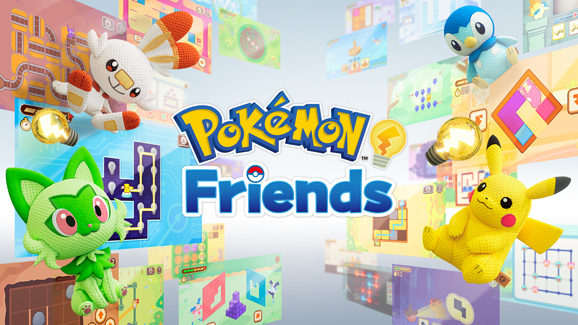Key Takeaways
Created with AI - we're still experimenting, so apologies if it misses the mark
- Pokémon Friends is designed for accessibility and offers engaging minigames suitable for younger players, with some control issues on mobile but a seamless experience on Nintendo Switch.
- The game features an interactive plushie collection system and offers limited progression, even with in-app purchases, potentially limiting long-term play and player enthusiasm.
- Despite criticism for repetitive gameplay and unresponsive controls, the game emphasizes bonding with Pokémon and showcases a kid-friendly educational focus through its minigames.
- The Pokémon Company collaborates with Wonderfly Inc., a Japanese firm specializing in child-oriented games, to create the intuitive design of Pokémon Friends.
Exploring Pokémon Friends: Balancing Accessibility and Criticism
The Pokémon Company consistently broadens its iconic franchise’s appeal, which has captivated gamers since Game Freak’s RPGs debuted in 1996. Evolving beyond handheld games, the brand now encompasses multiple games, TV shows, movies, and trading cards, all designed for a wider, more accessible audience. While Game Freak balances new fan engagement with retaining older players through complex projects, The Pokémon Company, with titles like Pokémon Friends, emphasizes creating games that are easy for newcomers to enter. Though praised for its concept of bonding with Pokémon, the game drew criticism for issues such as unresponsive controls and repetitive gameplay.
Engaging Minigames in Pokémon Friends: A Kid-Friendly, Educational Adventure
Pokémon Friends offers approximately 50 minigames that progressively increase in difficulty, making it an engaging title ideal for younger players who may benefit from parental assistance during more challenging moments. Available on mobile and Nintendo Switch, the game emphasizes ease of play. The Pokémon Company collaborated with Wonderfly Inc., a Japanese firm specializing in kid-friendly games with an educational focus, evident in Pokémon Friends’s intuitive design. While some mobile minigames face control issues, occasionally obscuring the screen due to motion controls, the Nintendo Switch version offers a seamless experience. Players can use a Pro Controller in tabletop mode or with the console docked to its base, making controls straightforward. Though simple, the games maintain player interest with bright, cheerful graphics and numerous adorable Pokémon appearing throughout.
Interactive Plushie Collection and Minigames in Pokémon Friends – Limited Progression Despite In-app Purchases
Pokémon Friends caters primarily to children, but adults can also participate. The game features skill-testing minigames and an interactive machine in the main menu that dispenses random Pokémon plushies when players toss yarn balls. In the in-game town, children may desire specific plushies, prompting a decision: keep them for their virtual room or gift them to earn rewards, such as daily stamps for completing minigames. The free version of Pokémon Friends allows players to access three unique minigames daily, which can be replayed as often as desired. However, replaying these free games does not update scores, increase difficulty, or introduce new missions in the city, leading to a sense of stagnation. To unlock more daily minigames, a payment of 9.99 euros is required. Yet, even after purchase, the game largely retains its free-to-play structure. The paid version does not transform into a full-fledged game with mission progression tied to minigame completion or updated high scores. Instead, it adjusts access barriers rather than removing them entirely, confining players to the same daily format and limiting the potential for ongoing engagement and progressive goals.
Pokémon Friends: Engaging Games Marred by Limited Progression
Pokémon Friends is easy to recommend to new players due to its fun, engaging, and educational minigames, complemented by appealing graphics. However, the persistent structural limitations of its paid version, which offers no true progression or stimulating new goals, may hinder long-term play and diminish player enthusiasm.
In Case You Missed It
For all you Pokémon enthusiasts out there, be sure to check out “All Announcements from the Pokémon Presents Event of July” by Sophie Laurent, published on July 23rd. The post dives into exciting new developments such as a stop-motion animated feature and an intriguing new mobile game called “Pokémon Friends.” Plus, there are updates on upcoming seasons, games like Pokémon Champions and Pokémon Legends Z, and even news about a themed park in Greater Tokyo! There’s something for every fan to get excited about—so don’t miss out (read more here: All Announcements from the Pokémon Presents Event of July). If you’re a fan of both Pokémon and the world of Shonen Jump, don’t miss Jonathan Dubinski’s latest piece, “One Piece x Pokémon in Shonen Jump,” published on July 28th. This article delves into The Pokémon Company’s exciting collaboration with Shueisha, featuring contributions from renowned manga authors like Eiichiro Oda, who has created a stunning illustration of Luffy alongside beloved Pokémon characters. There’s more to come as additional works are revealed in the upcoming edition of Weekly Shonen Jump. Dive into this special tribute by checking out the full article One Piece x Pokémon in Shonen Jump.
Have any thoughts?
Share your reaction or leave a quick response — we’d love to hear what you think!
